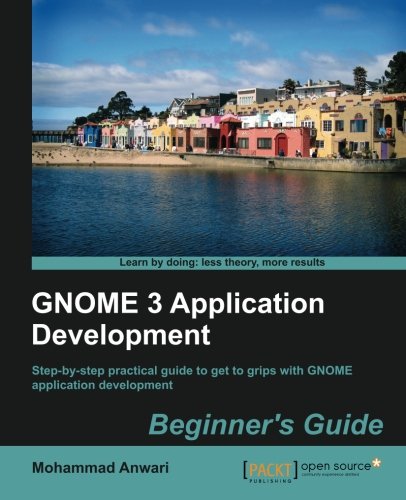

Most ebook files are in PDF format, so you can easily read them using various software such as Foxit Reader or directly on the Google Chrome browser.
Some ebook files are released by publishers in other formats such as .awz, .mobi, .epub, .fb2, etc. You may need to install specific software to read these formats on mobile/PC, such as Calibre.
Please read the tutorial at this link: https://ebookbell.com/faq
We offer FREE conversion to the popular formats you request; however, this may take some time. Therefore, right after payment, please email us, and we will try to provide the service as quickly as possible.
For some exceptional file formats or broken links (if any), please refrain from opening any disputes. Instead, email us first, and we will try to assist within a maximum of 6 hours.
EbookBell Team

5.0
80 reviewsStep-by-step practical guide to get to grips with GNOME application development
Overview
In Detail
GNOME is a desktop environment and graphical user interface that runs on top of a computer operating system. GNOME 3 provides both modern desktops and development platforms with more than 50 supported languages of the world. Since 1999, it has been evolving into a very nice desktop to use and an interesting platform to develop on.
GNOME 3 Application Development Beginner’s Guide is about developing GNOME 3 application with Vala and JavaScript programming languages. It guides the reader to build Gtk+, Clutter, and HTML5 applications on the GNOME 3 platform. It covers GNOME 3 specific subsystems such as data access, multimedia, networking, and filesystem. It also covers good software engineering practices such as localization and testing.
This book is full of step-by-step tutorials and ready to run codes. The examples are written in a simple and straightforward way to make it easier for the reader to get a thorough understanding of the topics.
The book starts with the installation of GNOME 3 and ends with building two exciting projects, a web browser and a Twitter client. The book starts from the basics and gradually talks about more advanced topics.
It then guides the readers in using the development environment starts from Anjuta IDE, Glade, and DevHelp. The essential GNOME 3 subsystems like GStreamer, GLib, GIO, GSettings, Evolutions Data Server, WebKit, and GNOME desktop are then uncovered one by one. Then the internationalization, localization, and unit testing techniques are brought up.
GNOME 3 Application Development Beginner’s Guide is really a guide that a novice GNOME 3 application developer must not miss.
What you will learn from this book